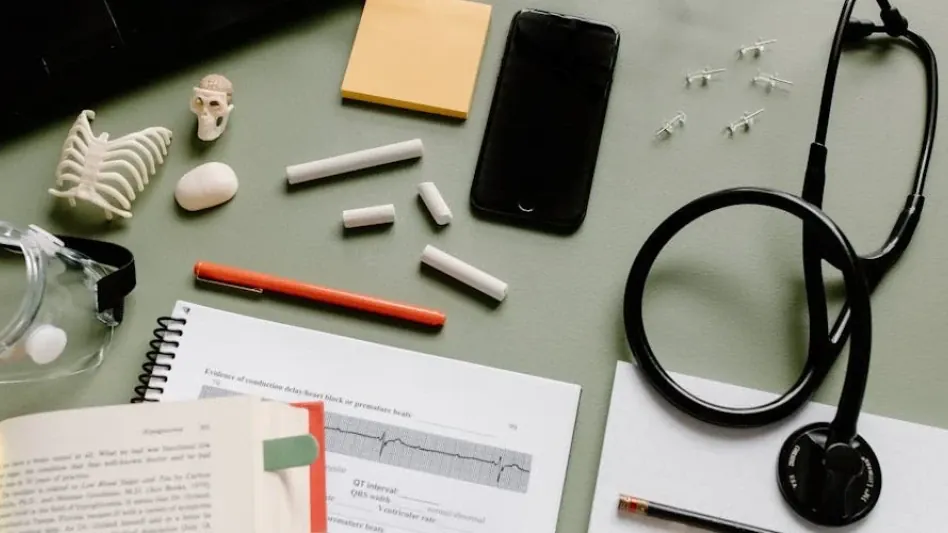The recent conference at the University of Colorado Anschutz Medical Campus, titled “Engaging with AI: Learning, Adapting and Growing Together at CU Anschutz,” explored the promise and implications of artificial intelligence (AI) in medical and academic settings. With about 500 participants who attended both in person and online, the event aimed to demystify AI and guide the campus community on its approved applications, encouraging confident exploration and utilization of AI tools. Chancellor Don Elliman set the thematic tone by emphasizing the importance of unlocking AI’s potential while minimizing its dangers, a sentiment that resonated throughout the day’s discussions and presentations.
The Promise of AI in Medical and Academic Settings
Chancellor Don Elliman opened the conference by stressing the critical balance between harnessing AI’s potential and mitigating its inherent risks. He underscored the broader vision of AI transforming educational and medical landscapes, providing enhanced capabilities and efficiencies. This was followed by an eye-opening presentation by Bill Quinn, a futurist and foresight strategist with over 25 years of experience in leadership roles at Tata Consultancy Services. Quinn provided a deep dive into reimagining the future with AI, highlighting how, despite humanity’s natural resistance to change, our exceptional adaptability enables us to embrace technological advancements when necessary.
Quinn shared compelling examples to illustrate AI’s transformative impact, such as the implementation of digital twin technology and virtual interactions with deceased loved ones. Digital twin technology involves creating virtual replicas of physical entities, allowing for sophisticated simulations and optimizations. Imagine a future where medical professionals can use digital twins of patients to predict the outcomes of surgeries or treatments, thereby enhancing patient care. Similarly, virtual interactions with the deceased, while potentially controversial, could offer emotional benefits and closure for grieving individuals, showing just how deeply and personally AI can touch our lives. These applications underscore AI’s potential to revolutionize everyday life, making various processes more efficient, personalized, and interconnected.
AI Tools and Ethical Considerations
The practical aspect of AI integration was addressed by Chief Information Officer Christopher Smith and Deputy CIO Michael G. Miller, who provided a comprehensive catalog of AI tools available for campus use. Their presentation delineated which tools are approved for university tasks and which require special review and security planning. This clear delineation aims to ensure that staff and students can confidently use AI applications while maintaining institutional security protocols. They encouraged employees to engage with these tools and share their experiences, fostering an environment of continuous learning and adaptation. This collaborative approach not only enhances the utility of AI tools but also builds a culture of innovation and safety within the university community.
Ethical considerations were a significant theme of the conference, particularly highlighted by Matthew DeCamp, MD, PhD, who serves as an associate professor at the Center for Bioethics and Humanities and the Division of General Internal Medicine at the CU School of Medicine. DeCamp’s discussion delved into the complexity of practicing ethics in AI. He raised critical questions, such as whether AI liberates individuals to make their own choices or restricts them by reinforcing past preferences. He emphasized the necessity of maintaining unbiased datasets to prevent compromised analyses and outputs, as biased datasets can lead to discriminatory outcomes. By advocating for transparency, choice, and agency, DeCamp highlighted the ethical imperative of ensuring that AI applications are developed and deployed responsibly, reflecting the values and principles of the society they serve.
AI in Medical Research and Practice
In the field of medical research, Jayashree Kalpathy-Cramer, PhD, provided fascinating insights into oculomics, a burgeoning field that leverages advanced imaging and AI technologies to detect systemic diseases early. Kalpathy-Cramer’s research demonstrates how a mere image of the eye’s rear can reveal extensive health details, including an individual’s age, gender, smoking status, and even heart disease risk. This ability for early detection represents a significant leap forward in preventative medicine, allowing healthcare providers to intervene before symptoms become apparent. The integration of AI in medical imaging not only enhances diagnostic accuracy but also personalizes patient care by offering tailored treatment options based on individual health profiles.
Yanjun Gao, PhD, shifted the conversation to the current use of large language models (LLMs) in clinical practice. Gao noted that AI often struggles with complex patient histories, which can pose significant challenges for accurate diagnosis and treatment recommendations. However, she emphasized the critical role of well-designed prompts in guiding AI models to produce accurate outputs. These prompts serve as precise questions or directives that shape AI responses, ensuring relevance and accuracy. Gao pointed out the trial-and-error nature of refining these prompts, underscoring the continuous need for improvement and adaptation. This iterative process is vital for enhancing AI’s functionality and reliability in clinical settings, ultimately contributing to better patient outcomes.
AI in Health Sciences Education
The application of AI in health sciences education was thoroughly explored in a panel discussion moderated by Lisha Bustos, the director of Digital Learning in the Office of Digital Learning. Academic professionals from various disciplines shared their experiences of integrating AI into their curricula. For instance, Benjamin Crocket, DMD, MS, from the CU School of Dental Medicine, Heather Anderson, PhD, and Sunny Linnebur, PharmD, from the Skaggs School of Pharmacy and Pharmaceutical Sciences, as well as Ryan A. Peterson, PhD, MS, and Antonio R. Porras, PhD, from the Department of Biostatistics and Informatics, all highlighted innovative approaches such as simulating patient interactions and using AI-generated responses from platforms like ChatGPT and Microsoft Copilot.
Panelists emphasized the importance of these AI applications in enhancing students’ learning experiences. By simulating real-world scenarios, students can practice and refine their skills in a controlled environment, gaining valuable insights and feedback. Moreover, AI-generated responses offer a unique opportunity to compare and contrast human and machine-generated solutions, fostering critical thinking and adaptability. The benefits of AI in education are manifold, including improved student engagement, personalized learning experiences, and the preparation of future healthcare professionals for an increasingly AI-driven world. Continuous adaptation and feedback are essential to optimize these educational tools, ensuring they meet evolving learning needs and technological advancements.
Recognizing AI Innovations
The recent conference at the University of Colorado Anschutz Medical Campus, called “Engaging with AI: Learning, Adapting and Growing Together at CU Anschutz,” delved into the potential and consequences of artificial intelligence (AI) in both medical and academic fields. The event attracted about 500 attendees, combining in-person and online participation, with the goal of demystifying AI and guiding the campus community on its approved uses. This effort was intended to inspire confidence in exploring and using AI technologies. Chancellor Don Elliman set the stage by stressing the significance of harnessing AI’s potential while mitigating its risks, a theme that echoed through the day’s presentations and discussions. The conference highlighted how essential it is for institutions to embrace AI thoughtfully, ensuring they leverage its benefits without falling prey to its pitfalls. This balanced perspective allowed attendees to appreciate the transformative capabilities of AI and understand the ethical considerations necessary for its responsible application.









